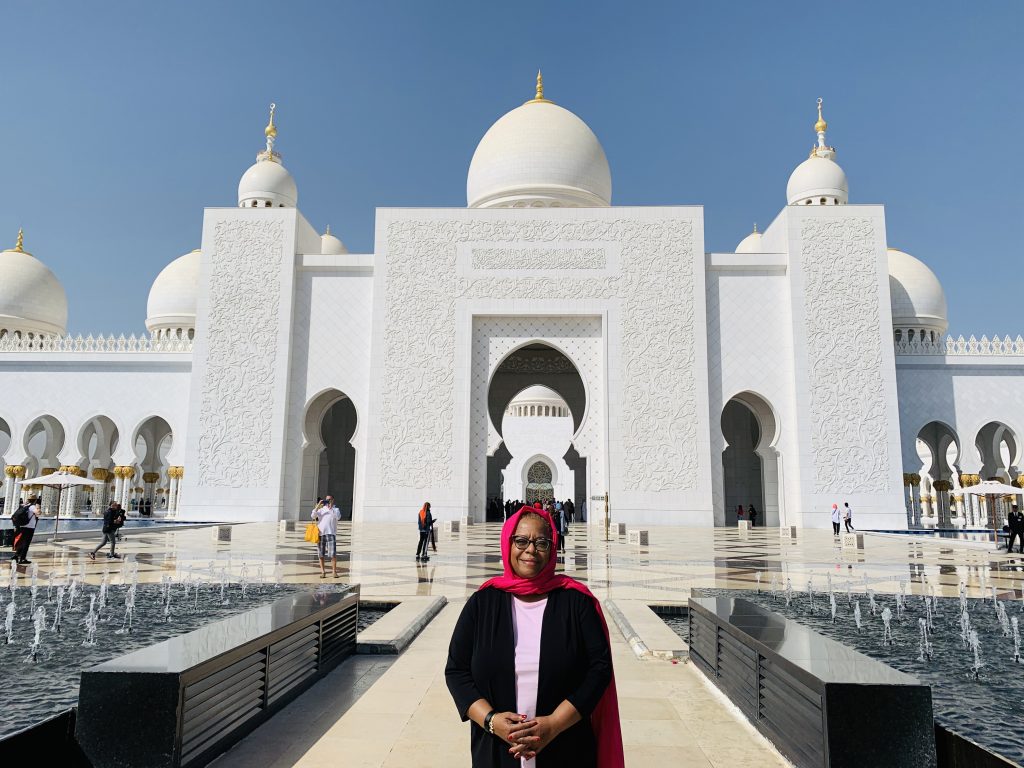
Same Traditions Around the World
Earlier this month, I had the privilege of visiting the Sheikh Zayed Grand Mosque in Abu Dhabi. When I covered my head with my pashmina, I felt transformed. My heart and head transported back in time to being a second grader at Our Lady Star of the Sea Catholic School in Atlantic City. Why? It was the 70s, so I wore a little scarf on my head when I attended mass. Our cultures are more alike than they are different.
Similarities of Weddings of All Cultures and Religions
Then, my heart and and head reminded me of the religious similarities of weddings of all cultures and religions — Yes, my heart and head always finds their way back to weddings! And I remembered the Maya Angelou quote, “We are More Alike, My Friends, Than We Are Unalike.”
Some Examples of Wedding Similarities
The creation of the sacred ceremony space
In many cases, both Jewish and Hindu couples create beautiful and sacred spaces for their wedding ceremonies. The chuppah (huppah) at a Jewish wedding ceremony symbolizes a home, a garment and a bed covering. Its openness recalls the tent of the biblical Abraham, a paragon of hospitality, who kept his tents open on all sides so that visitors would know they were welcome. At a Hindu or Jain wedding ceremony, you are more than likely going to find a mandap. Similar to a chuppah, a mandap is a covered structure with four pillars. The four pillars symbolize the four parents who worked diligently to raiser their children.
The act of walking in a circle seven times
During a Jewish wedding ceremony, you will sometimes see one partner walk around the other seven times. This is called the circling ceremony and some say this ties back to the seven days of creation and as a reminder that marriage is itself a process of creation. In a similar fashion, Hindu wedding ceremonies include a ritual that includes seven steps or seven circles. It’s called a saptapadi and it’s a ritual in North Indian Hindu weddings. During the saptapadi, the couple will have their garments tied together. In South India, the couple walks seven steps together to proclaim their friendship. The North Indian tradition involves the couple making seven circles around a ceremonial fire.
The large, gorgeous colorful celebrations
Many weddings are bright, joyful and full of energy, but very few compare to the vibrancy of Nigerian weddings and Indian weddings. The pigments on display are gorgeous, regal and artistic, and the guest lists can number in the hundreds — a cultural holdover from both countries, where milestone events were community gatherings open to both close relatives and loose acquaintances.
And, don’t get me started on RSVPs!
Everyone thinks their culture is the WORSE when it comes to sending in RSVPs, and I am here to tell you that EVERYONE IS BAD! Some cultural groups are a little more notorious for their “RSVP neglect” than others, but believe me — this is human behavior more than it is cultural.
So, you see where I am going with this blog post, right?!? Our ancestors may come from different parts of the world, but we are more alike than we are different. Even when it comes to weddings.
Love and Soul Always, Kawania